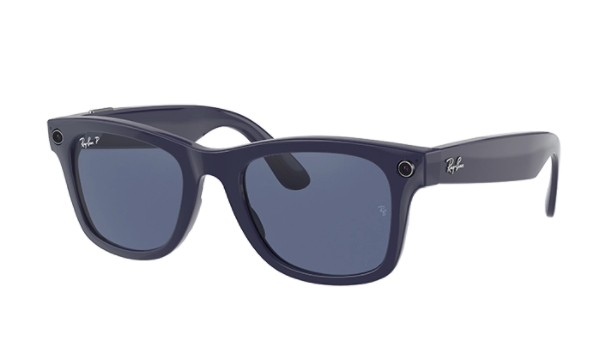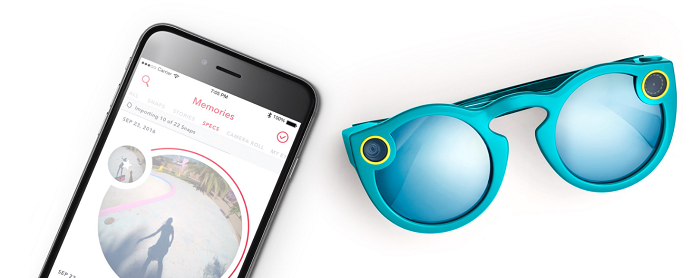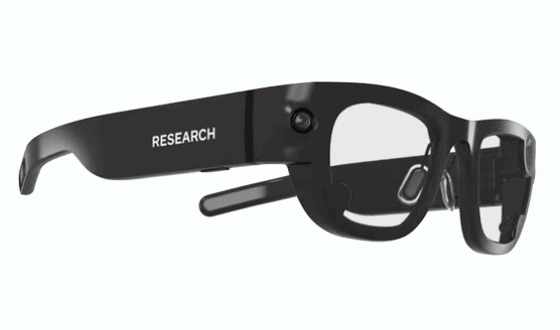While Meta continues to build for the next phase of digital connection in the metaverse, and focus on new AI-based bets for right now, it’s also still establishing its full roadmap for AR, and wearables that will augment your worldview with digital elements.
Which it claims is also a part of its broader metaverse vision. But really, the metaverse is VR, and AR is a whole different thing, no matter how Meta tries to conflate the two, in the hopes of claiming overall tech sector leadership.
Meta’s big hope in AR is its AR glasses, which are currently scheduled for launch in 2027. But in order to acclimatize the market for that next stage, it’s already released its first glasses model, in Ray Ban Stories, which are Meta’s attempt to create a fashionable digital device, which also provides some connective functionality.

But thus far, they haven’t been a hit.
According to a new report from The Verge, over 90% of Ray Ban Stories users have stopped using the device since buying the glasses.
As per The Verge:
“Internal company documents reveal that around 27,000 of the 300,000 units reportedly sold between September 2021 and February 2023 are still being regularly used each month. Last April, Meta was reported to have sold just 120,000 pairs of the Ray-Ban Stories – less than half its 300,000 goal at that time.”
So of the 300,000 pairs sold, only a fraction are still seeing regular use, with the limited feature set, which enables you to take pictures, listen to music, answer phone calls, etc., seemingly not catching on with a wide audience.
Which is not surprising. Back in 2016, Snapchat released the first iteration of its Spectacles camera-equipped sunglasses, which are functionally very similar to Meta’s Ray Ban Stories device.

And no one cared.
Well, that’s not entirely correct. Snap did see a rush of early sales hype, which led to it moving over 150k units. But it also overestimated demand, leaving it with “hundreds of thousands” of unsold Spectacles sitting in warehouses a year after launch.
That initial miscalculation ended up costing Snap over $40 million in losses, which suggests that around 300k Spectacles were never sold in that initial production run.
Yet Snap is still selling them, and it’s still sticking with the concept, which seemingly points to a future iteration of the glasses that will be fully AR-equipped, even though Snap has reportedly been forced to rethink some its AR plans due to rising costs, and lower ad intake.
Meta has also scaled back its AR timeline, both through cost-cutting and production missteps, with its acquisition of microLED maker Plessey failing to deliver the advance that it was hoping for its AR device.
Yet both Snap and Meta do have functional versions of their AR glasses in testing, which are already in the hands of external users for initial experiments.

They’re not polished yet, and they’re not ready for the next level of full commercial availability. But both companies are working on the next stage, which will put digital overlays onto your real-world view.
As such, it’s hard to know what to take away from the initial response to Ray Ban Stories.
I mean, it’s an interesting project, but it also seems unlikely that Meta would expect huge sales from this first iteration of the device, which, on balance, is not a major functional leap over others in the market.
Technically, they’re a lot more advanced, but in terms of what you can actually do with them, they’re not way beyond what Spectacles has long provided. So I don’t know that Meta was really trying to push these as a major offering, or whether this was always going to be just the first minor step in a longer AR development pipeline.
It seems like Meta really needed to build a production pipeline, and establish partnerships for the future, and Ray Ban Stories is just the early precursor to what comes next.
Indeed, The Verge also notes that, despite the losses, Meta’s still planning to release a second-gen version of Ray Ban Stories next year, as it continues to move towards the AR future.
So while its initial foray into digitally-equipped glasses hasn’t caught on, maybe Meta sees this as a necessary stepping stone for that next stage.



